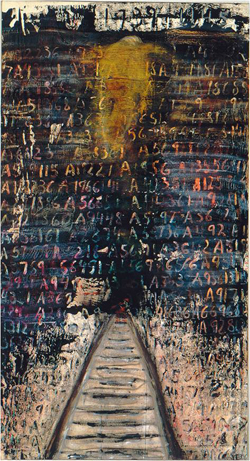
Exploring the Holocaust through art

Grace Astrove ´10 has always been interested in the Holocaust, and was fascinated to learn that generations of artists have been inspired by this horrific event. She wanted to know more. So Astrove, an art history and religious studies double major, jumped at the opportunity to combine her interests, designing an independent study to compare the artwork of Holocaust survivors to the work of modern artists who have acquired the event as a subject matter. "Through my research, I have found that Holocaust survivors´ artwork tends to be visually clear and serves as a firsthand account of the event while being frequently emotionally charged," Astrove said. In contrast, she found the work of many modern artists to be abstract and less visually clear.
Guiding Astrove through her independent study was her academic advisor and mentor, Religious Studies Professor Sharon Portnoff, who specializes in Holocaust theology and modern Jewish thought. Portnoff invited Astrove to assist in "Holocaust and Art," a Freshman Seminar that examines how various artists represent the Holocaust and how their representations change and challenge history. In the course, students also explore how artistic expression can reflect and record an event in a unique way that eludes other forms. Astrove had the opportunity to lead two lectures, sharing her findings and assisting the 16 freshmen in the class with their writing and research skills. The freshmen also benefited from having a senior who was able to offer advice about how to excel during their first semester of college.
"It was beneficial for the students to have a near contemporary as a liaison for their first semester of college," Portnoff said. In addition to studying and analyzing the course´s materials, Astrove had the chance to discuss her research with the seminar´s guest lecturers, including Robert Mankoff, cartoon editor for The New Yorker. Astrove and Mankoff, who is known for his provocative cartoons, discussed the appropriate ways cartoonists can depict the Holocaust and what crosses the line. "It is important to study how the Holocaust is represented in art - and even in humor - so that our memory of it does not become sanctified," Portnoff said. Jan. 27 is International Holocaust Remembrance Day, designated by the United Nations as a day to remember those lost and honor those who survived. Art, Portnoff said, can help us remember.
January 27, 2010
